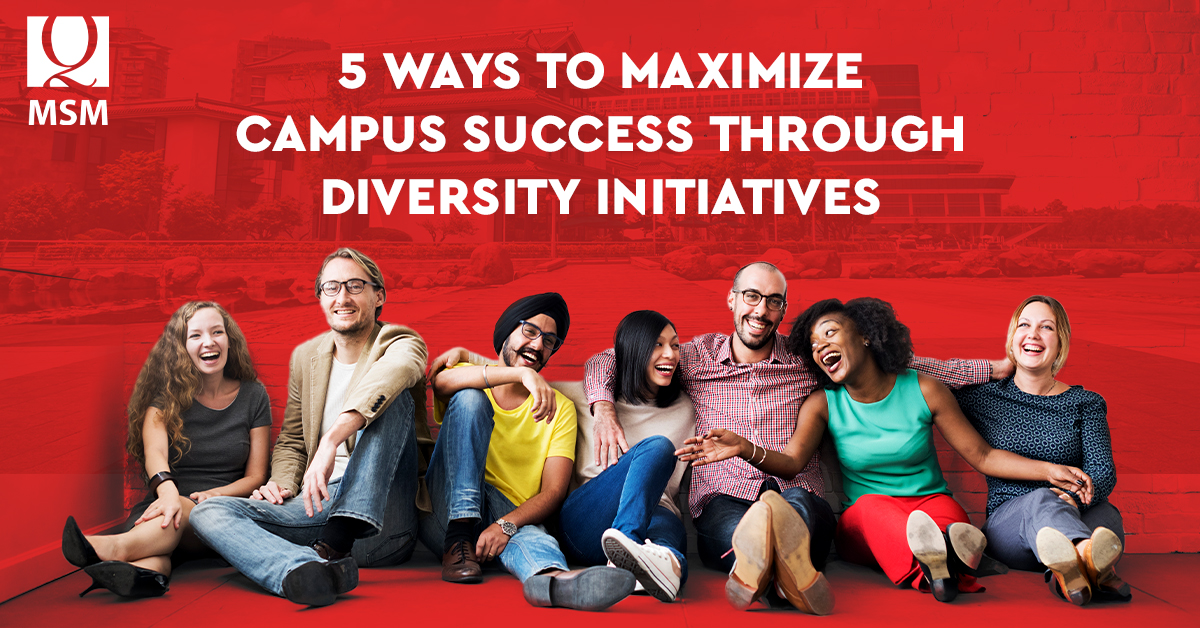Diversity, equity, and inclusion (DEI) programs have become important drivers of positive change in colleges and universities, given the ever-changing landscape of higher education. These programs recognize and appreciate the diverse range of student identities and are fundamental to establishing vibrant and fruitful academic communities.
In addition to statistical data, DEI programs promote an inclusive culture that nurtures a campus environment where diversity is celebrated and students are supported in their overall growth.

Universities are small worlds in the diverse global landscape that graduates will navigate in an era of globalization. DEI initiatives serve as lighthouses, essential to equipping colleges and universities to produce culturally competent graduates. They facilitate the transformation of higher education institutions into vibrant centers where students not only gain exposure to diverse cultural viewpoints but are also inspired to actively engage with and value the richness of diversity through programs like multicultural events, awareness campaigns, and specialized student organizations.
5 Ways Diversity Initiatives Propel Campus Advancements
1. Enhancing Academic Performance and Graduation Rates
Students from marginalized identity groups, such as black, indigenous, Latinx, Asian, and first-generation students, perform better academically, which is one of the main results of DEI programs.
Studies show that these students thrive academically and graduate at higher rates in institutions with robust diversity programs. This beneficial effect is largely due to the sense of community that DEI initiatives foster as well as the specific spaces and resources designed for students of color. Additionally, increasing the recruitment of faculty members from diverse backgrounds contributes to fostering an inclusive academic atmosphere.
2. Reducing Bias and Promoting Peer Acceptance
More racially varied learning environments are produced via diversity initiatives, which help students from various ethnic backgrounds understand and trust one another better. As a result, bias is lessened and peer acceptance is increased.
The fact that students of color report experiencing less racial stress and impostor syndrome helps to foster an inclusive campus environment. Building such an environment is essential to preparing students for a globalized world that embraces diverse perspectives.
3. Increasing Faculty Satisfaction and Retention
DEI programs are associated with longer tenures and improved faculty satisfaction, especially when mentorship is included. The restructuring of employment policies, promotions, and advancement criteria at the university has had this beneficial effect.
Redesigned job descriptions, inclusive interview procedures, and required implicit bias training for search committees are some strategies to improve job satisfaction. These adjustments help current faculty members as well as boost the proportion of junior faculty members of color on campus.
4. Elevating Curriculum Quality and Engaged Classrooms
DEI programs help professors become more involved in their scholarship, consequently enriching the quality of curriculum and classroom instruction. Students attending universities with robust diversity initiatives say their time in school is more rewarding.
The academic work generated shows a commitment to addressing issues that have an impact on the communities where students will live and work, establishing meaningful connections between classroom learning and real-world challenges like social injustice, racism, and discrimination.
5. Preparation for Community Engagement and Leadership
Graduates from universities with strong DEI programs are not just highly qualified academics but also actively involved members of their communities. These people tend to take on leadership responsibilities. They are also more likely to get involved in local politics and government. Through their academic path, they have been exposed to a variety of perspectives, which has given them a broad awareness of race and ethnicity and prepared them for success in multiracial professional contexts.
Sources:
- Licht, E. J. (2023, September 12). 5 ways that college campuses benefit from diversity, equity and inclusion programs. The Conversation. Retrieved from https://theconversation.com/5-ways-that-college-campuses-benefit-from-diversity-equity-and-inclusion-programs-208905




